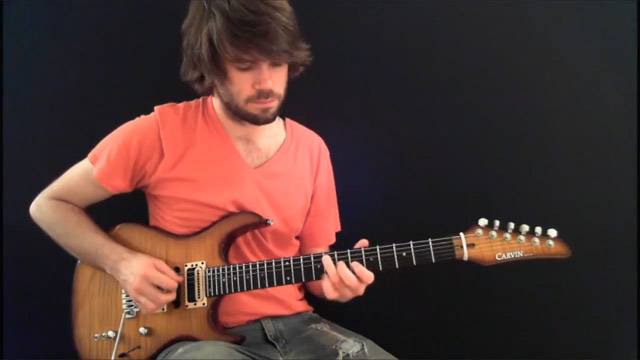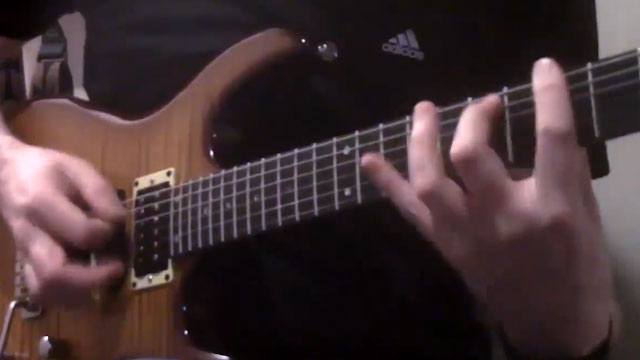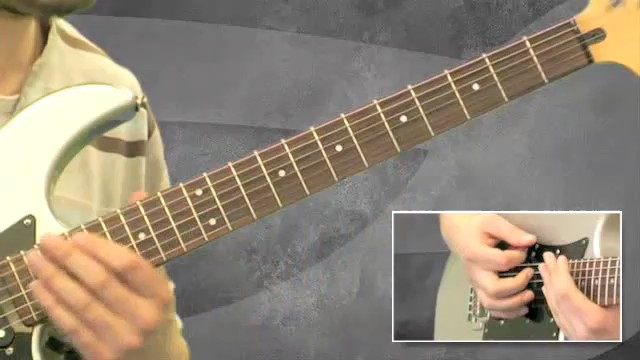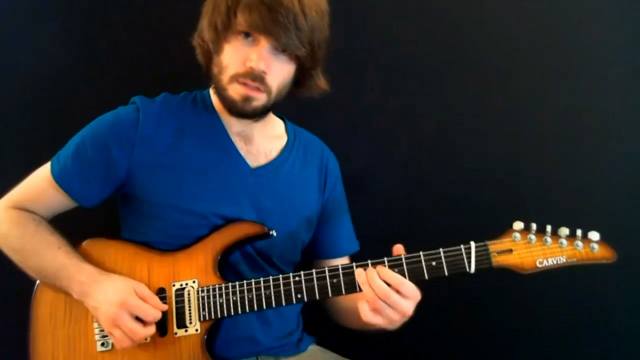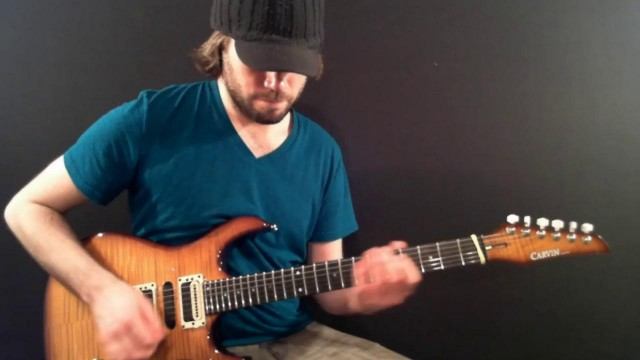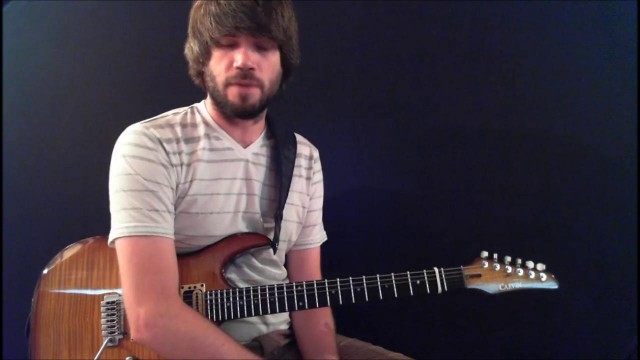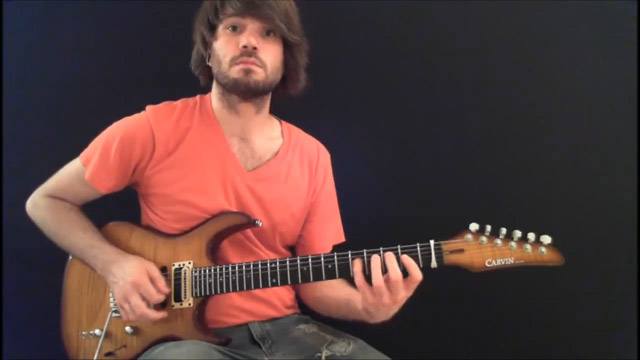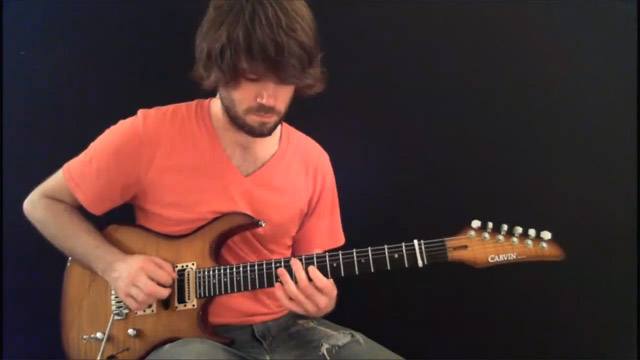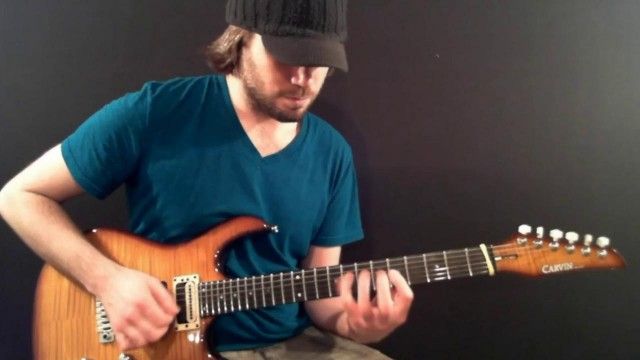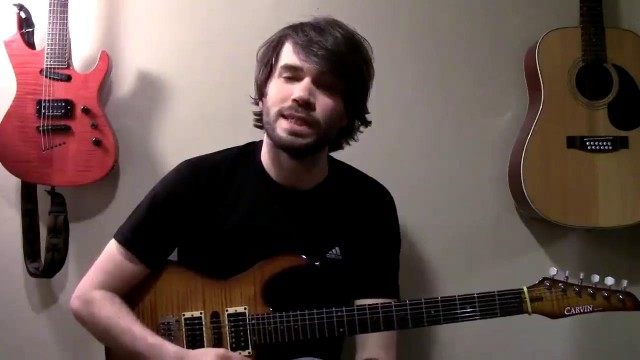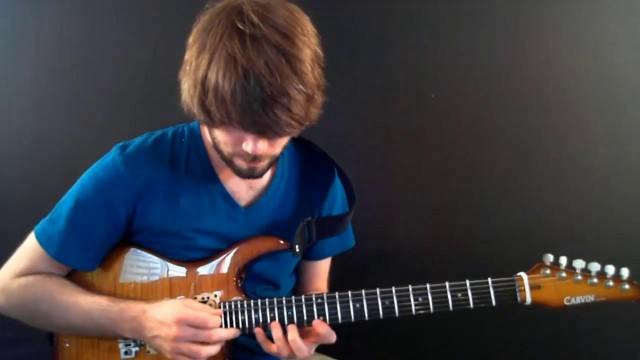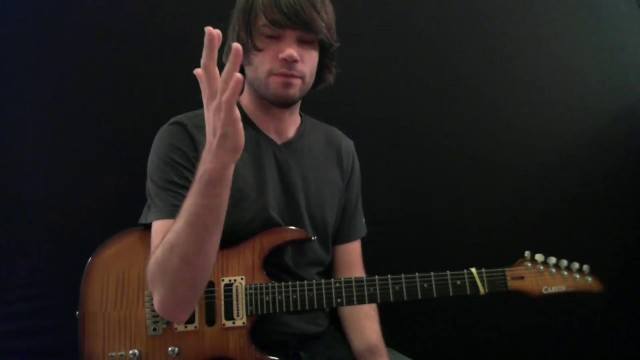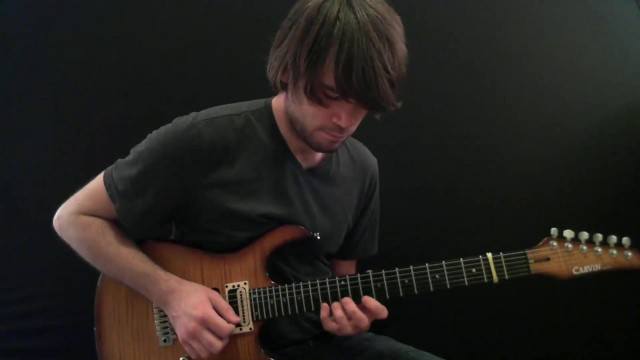As I said earlier we are basing these shapes off of the 4th voicing shapes I taught in one of my previous tutorials.
Just to recap a little bit, 4ths voicing are stacked 4th intervals as opposed to stacked thirds that we would see in triads or 7th chords.
Although, in these examples, we are adding one extra note to create these patterns. The note we are adding will always be a step below the lowest note of each 4th voicing.
If you refer to the tab it will help to further understand what I mean.
When it comes to playing this pattern you may choose to rest between each shape or you may decide to connect each shape with continuous 16th note triplets.
If you chose the first route you will find that each pattern will fit nicely into one beat and as you continue through the shapes each proceeding pattern will also fit right into the following beats.
If you chose to play continuous 16th notes you will find it harder to stay consistent since the accents will move as you play. This can be approached rhythmically or non-rhythmically depending on the player.




